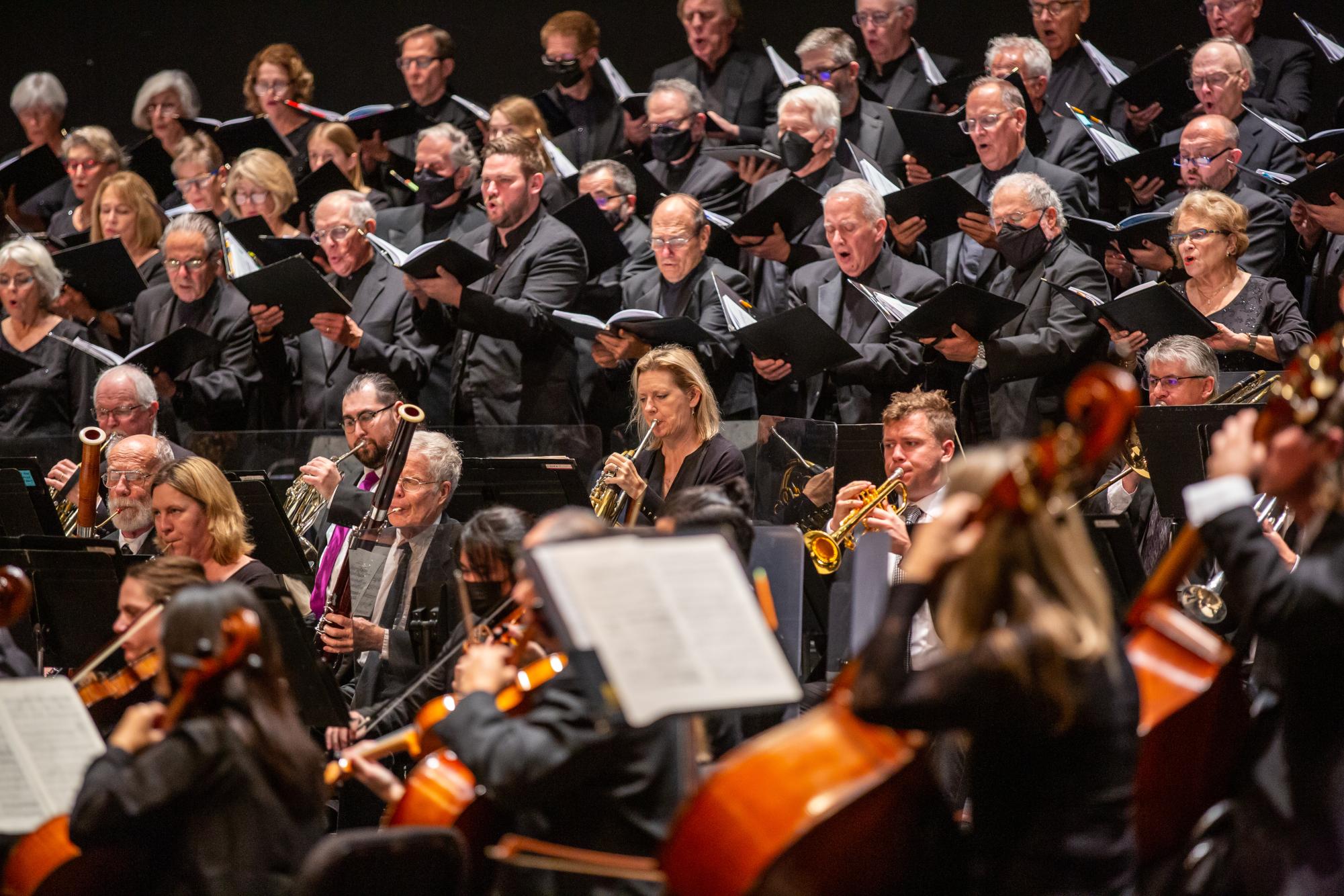Music is an interesting thing for people to be attached to. It’s essentially just a collection of sounds that happen to sound good together, so how could it possibly be so special? Beyond just the sounds, music stirs emotions and creates connections to a time, place, or event, and because of this, people use music to share their experiences with others. Music crosses the boundaries of language — no matter where you come from, you can listen to any type and still feel something.
On Feb. 10, The La Jolla Symphony and Chorus had, yet again, another outstanding production. They performed Nasim Khorassani’s new composition, “Crescendo,” which is a response to the recent Iranian Women, Life, Freedom movement that began in response to the death of Mahsa Amini. Amini was an Iranian woman who was arrested in Tehran for wearing her hijab “improperly.” She died while in police custody in September 2022, which incited opposition on the streets of Iran. This led to the Women, Life, Freedom movement, which pushes for more permanent political and social rights for women in Iran. As support has grown for the movement, there has been a change in the way young men and women feel about traditional patriarchal values dominating Iran’s culture.
I had the privilege of interviewing Khorassani, which gave me a unique new perspective on her composition and helped me go into the symphony with certain aspects of her piece to pay closer attention to, like the different layers of sounds she used to create the specified sound of the entirety of the piece. Khorassani did not want her orchestration to be a political message but rather focused on her own perception and feeling of this particular moment. She further explained how the death of Amini was an “awakening moment” for all Iranians to question many aspects of their lives, not just political or societal. This 10-minute composition encapsulates 40 years of Khorassani’s perspective, spanning a timeline that predates her birth and allowing for a holistic view that captures various stages of life. Because she never had the chance to write for a large orchestra performance, this was the perfect opportunity to display her love of bass tones.
“Crescendo” flipped the traditional roles of higher register instruments as the melodies and lower register instruments as the supporting sounds behind them. In reference to her creative process, Khorassani said that she views “composition as self-meditation and self-discovery,” an outlook that shines through her reversal of the way that music is traditionally composed. Khorassani wanted her arrangement to have a gradual and constant growing sound, but the material itself forced her to write in a cycle of sound which she tried to resist at first. As she allowed the piece to evolve organically, it started to unfold into what became “Crescendo.”
I am constantly looking for art that goes against the grain of what is considered “normal.” With this exhibition, Khorassani gave me something I had been missing for some time: an orchestral performance that goes against the traditional structure of music in a way I’ve never heard before. It was full of bass tones that moved in a cyclical way that gave me a tense feeling of wondering what was next. Underneath the long and low tones produced by the cellos, the violins and other higher-register instruments played soft notes that seemed to breathe with the music playing above them. This breath-like sound created even more tension as I experienced the anticipation as to what would happen next, but Khorassani kept me hanging.
As each cycle returned, this tension grew and grew with the bass tones increasing in volume and then coming back down, teasing the audience. There were moments when the traditional melody instruments picked up and started to overtake the bass tones but would then pull back and return to the cycle. Then, when least expected, it stopped, leaving you hanging, wanting and waiting for the ending that traditional orchestral music gives you. This ending seemed intentional as the whole piece kept you on the edge and then ended abruptly, leaving you to reflect on the whole performance.
Keeping in mind the revolution that occurred, you could feel the uprise in tension that the Iranian women might have been feeling during this time, which was relayed toward the audience as they heard the music. This tension, characterized by anticipation and change, reflects a yearning for progression while placing pressure on the audience and bringing attention to what is happening in Iran. Comparing the music to this movement in Iran, Khorassani encapsulated not only how she perceived this event but how many other women might have felt.
This composition was so different from anything else I’ve ever heard and left a lasting impression on me, a sentiment that will hopefully stick with many others, leaving them to think about not just the music, but the events and feelings tied to it as well.
Image courtesy of The La Jolla Symphony and Chorus









